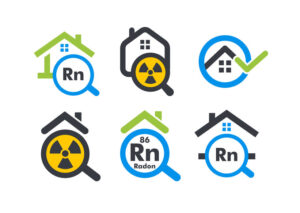
Radon levels fluctuate during the day, but they also fluctuate during the year. In general, radon levels are highest during the cold, winter months. But why is this the case? Radon is affected by weather changes, precipitation, and atmospheric pressure. Let’s dig into these three factors below:
Weather changes
Changes in the weather can have enormous implications on our everyday life. It impacts what clothes we wear, how much time we spend outside, and it can even impact the air pressure in the soil as well. This last one—the air pressure on the soil—can cause soil gases like radon to push up toward the foundation of your home. As a result, radon levels can increase in your home.
Precipitation (snow and ice)
During the winter, we mostly deal with snow and ice. When that snow and ice builds up, it creates a barrier between the soil and the air. As a result, radon, and other soil gases, are trapped underneath. These gases will need a way out, so they’ll follow the path of least resistance through the cracks and openings in your foundation.
Atmospheric pressure
Known as the thermal stack effect, this phenomenon describes how atmospheric pressure impacts the movement of air inside and outside your home. Cold air is denser than warm air, which is what causes cold air to fall and warm air to rise. So, when the warm air in your home escapes, cold air will be pulled up from the bottom of your home. This cold air will likely be from the basement, the outside, and the foundation—all three of which have higher levels of radon. As a result, when the cold air pulls up into your home, will be bringing radon with it.
Since radon levels are higher in your home during the winter, now is a great time to get your home or business tested for radon. Contact Axiom Service Professionals today to learn more.


Recent Comments